Feeding your baby is one of the most personal – and sometimes stressful – parts of early parenthood. Whether you're exclusively bottle feeding, combining breast and bottle, or just looking for a reliable back-up option, finding a baby bottle that works for both you and your baby can feel like striking gold. Enter the Fraupow Combi Feeding Bottles – designed with combination feeding in mind, these bottles promise to make the transition between breast and bottle smoother and more intuitive. But do they live up to the hype? We put them to the test to see if they really deliver on comfort, convenience, and baby approval.
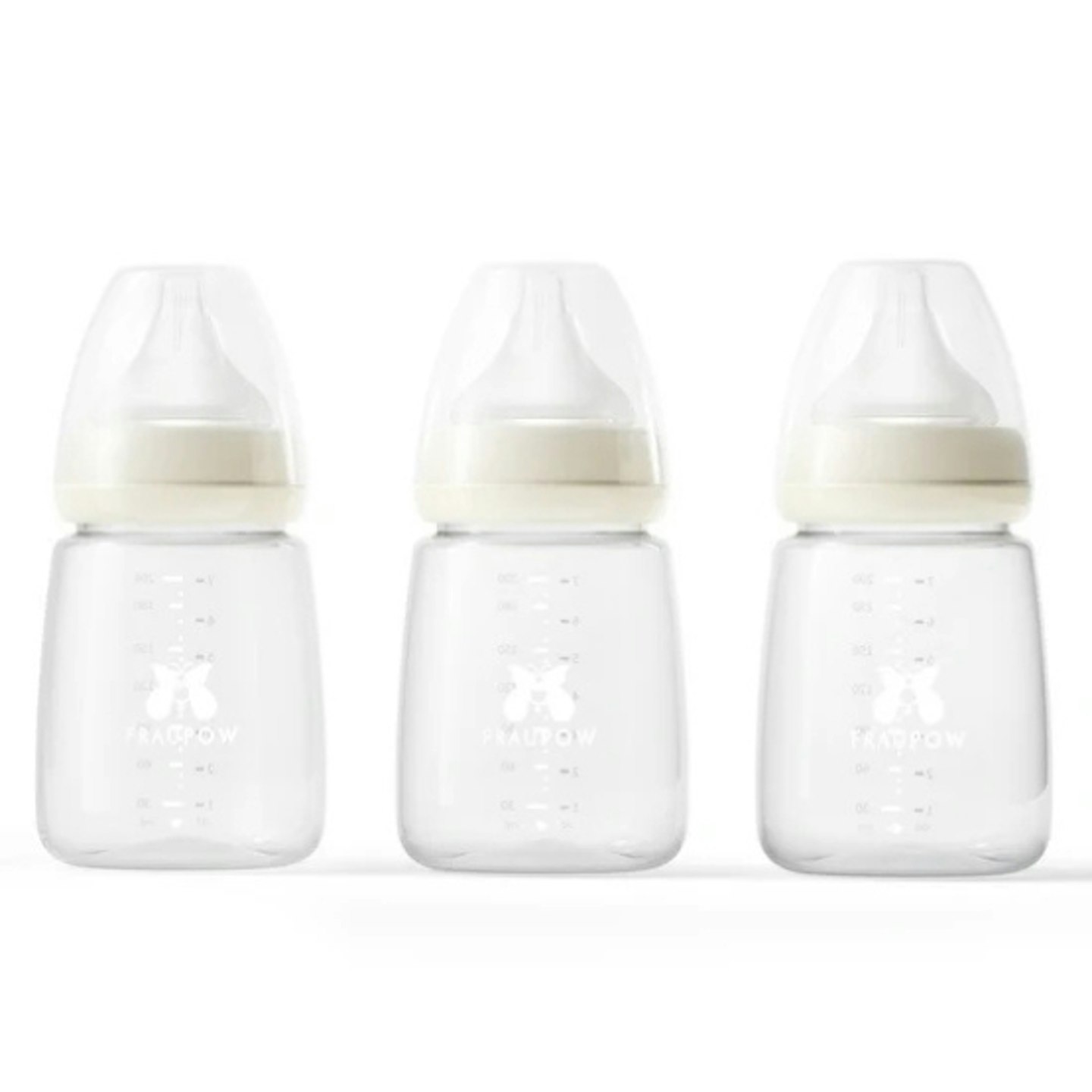
www.fraupow.com
Pros
- Glass bottles protect baby against plastics and chemicals exposure
- Teat is shaped differently to other bottles so breastfed baby may prefer it
- Bottle and all components can go into UV steriliser
- Bottle and all components can go into dishwasher
Cons
- Teat shape may not suit all babies at all stages
- Lack of instructions
- Unclear labelling of different teat sizes
- Only 1 teat per size which effectively means only 1 bottle can be used at a time. Not practical as you need at least a couple in rotation in order to avoid having to clean and sterilise immediately after each use.
| Capacity: | 200ml |
| Suitable from: | Newborn |
| Included teat sizes: | 3mths, 3-6mths and 6mths+ |
- Gradual slope to allow baby to take in a natural amount of the soft silicone teat
- Slow flow teat encourages baby to actively suck to get the milk and maintain natural feeding habits
- BPA free bottles made from high-quality food-grade PP
- Can withstand high-temperature sterilisation and the dishwasher
- Fraupow UK based Customer Service Team offer personalised help and support
Testing the Fraupow Combi Feeding Bottles
Our baby boy Dexter is 15 weeks old and tested the Frapow Combi Feed Baby Bottles over a two-week period. The bottles are available in glass or in plastic. We used the glass bottles and a friend used the plastic bottles. Up to this point, whenever we have bottle-fed, we have used the Tommee Tippee anti-colic bottles, which have a very differently shaped teat - much wider at the base and not gradually sloped like these. I had high hopes, based on the logic and ethos of the Fraupow teats, designed to mimic breastfeeding more closely.
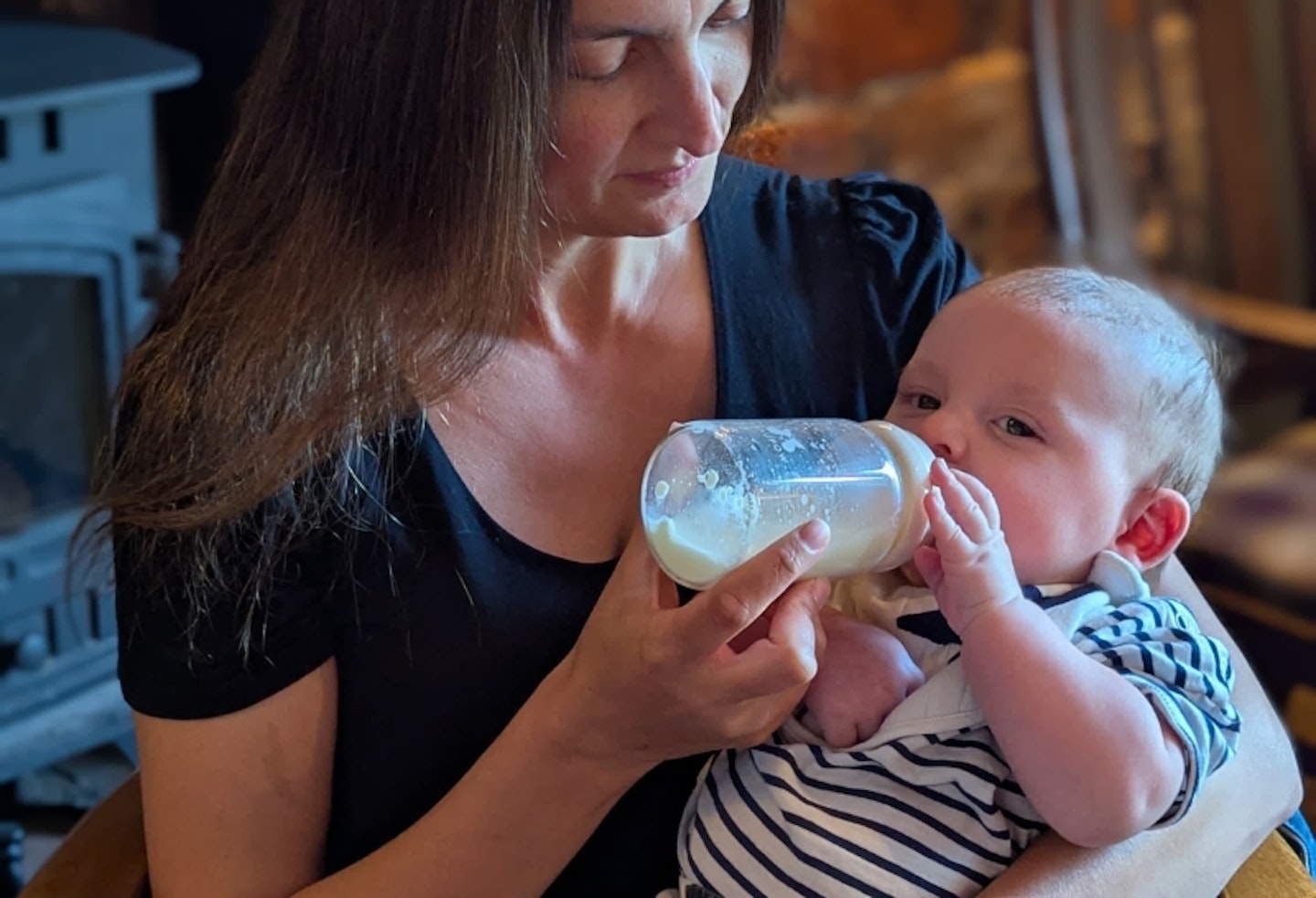
The Fraupow bottles came in attractive packaging, neither too medical nor too cutesy. I liked the sound of the promise to reduce nipple confusion and encourage easy acceptance between breast and bottle, as this is the flexibility I would like to have with options for feeding my (nearly) 4-month-old baby boy. I loved the fact that the bottles came in glass as well as BPA-free plastic as I am keen to minimise any leaching of plastics or chemicals when feeding the baby.
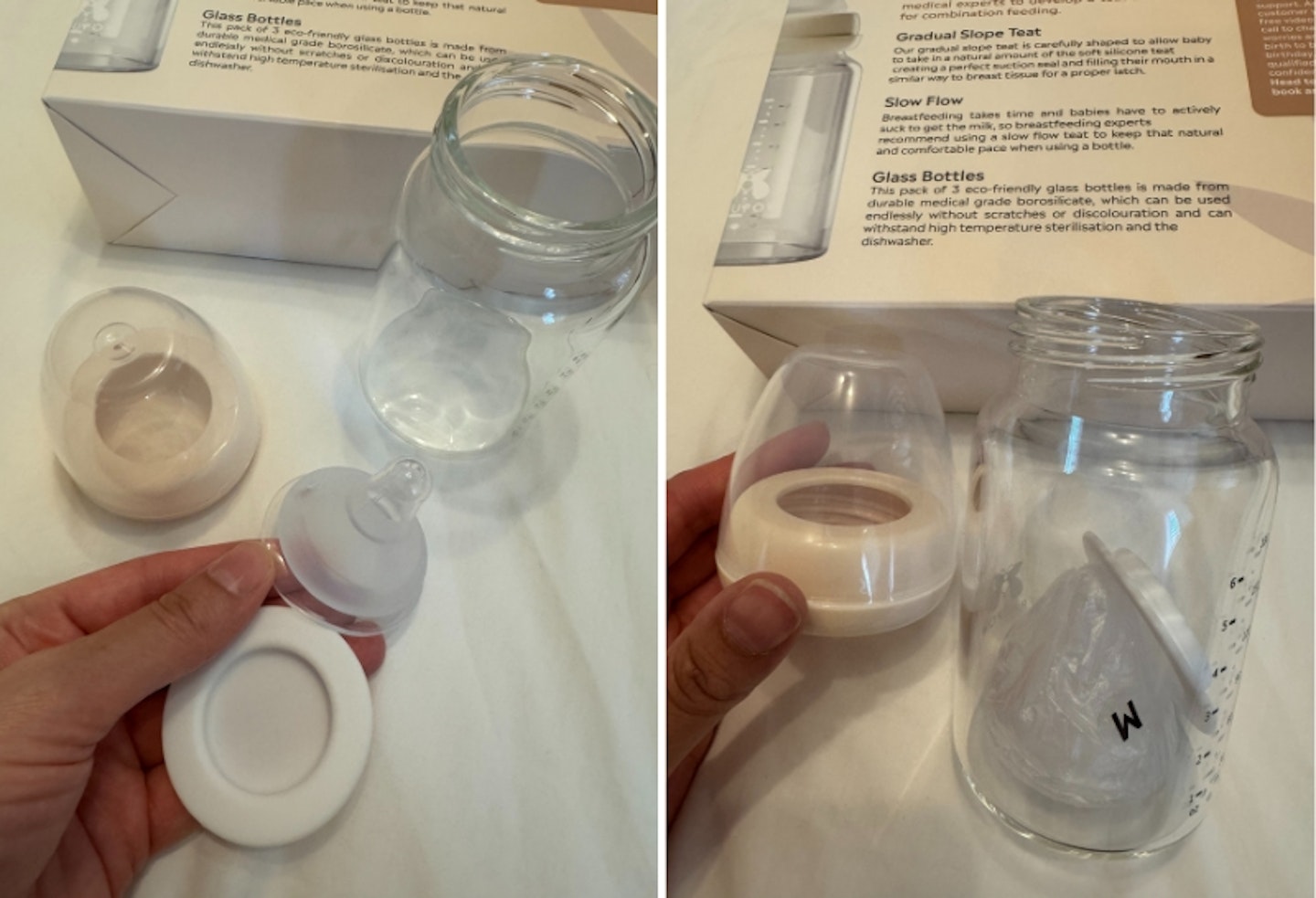
Each box contains three bottles (either glass or plastic), three silicone teats and three plastic lids. They are dishwasher-safe, although I prefer to wash them by hand. They are also steriliser-safe, and seemed fine after having been through my UV steriliser.
My main criticism is that the three teats are not labelled with the sizing. Each teat is wrapped in a little plastic bag with the letter S, M or L on it. I did not notice those letters until later. Unfortunately, I used the wrong size teat for my baby and he took too much milk far too quickly and spluttered alarmingly. I then examined the teats, found no difference between them to indicate which size each teat is, and then realised that there were letters on the individual wrapping. I am not sure how you are supposed to tell the difference - I suppose you keep the teats you are not using in the wrapping until they are the right size to be used. But then what is the point of having three bottles if you can only use one teat at any one time? This is not clear enough on the box or within the box, and there are no instructions other than those on the cover of the box itself. I then had to go through unscientific testing of the teats myself, to try to determine which was S (suitable for 0-3 months), M (suitable for 3-6 months) and L (suitable for 6+ months).
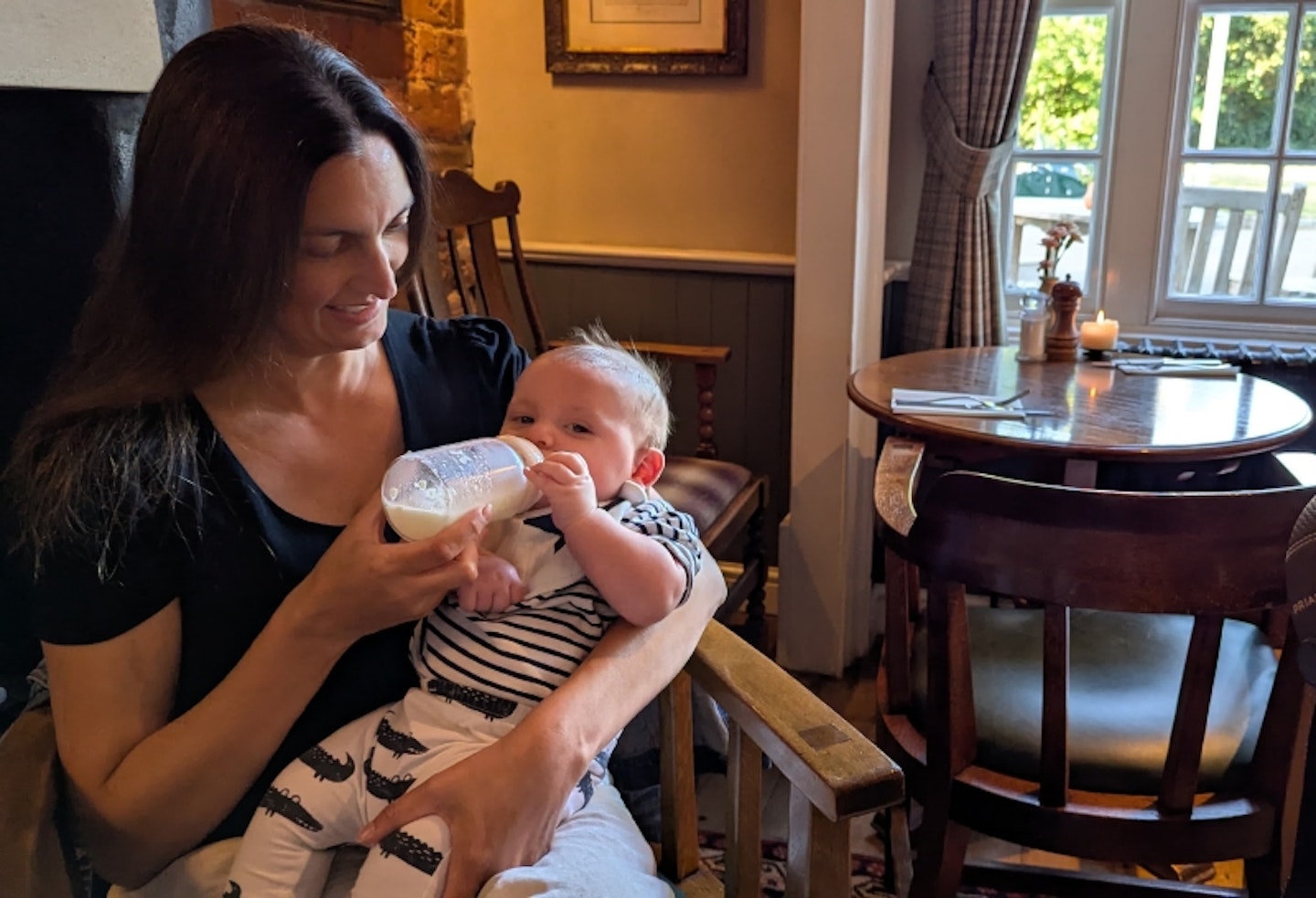
I can't say that my baby has been any more accepting of these bottles than any others, and he still has a strong preference for breastfeeding. He seems to spit out more milk when I am feeding him with these bottles, even though I am now (I think) using the correct-sized teat for him. It is hard to tell if this is because he would reject any bottles at this stage, if he is spitting out more because he is generally dribbling more, or for any number or combination of other reasons. There is a lot of guesswork in caring for a baby at this age!
He is nearly 4 months old and has been pretty much exclusively breastfeeding for the last couple of months - initially with some topping up, which has tapered off. I have had more success in feeding the baby with these bottles than my husband has. As you can see in the pictures, the baby took the bottle quite well when we were out at a pub for dinner one evening. Perhaps he just needed some time to get used to it because until now he has had the bottles with the fuller, orb-shaped teat.
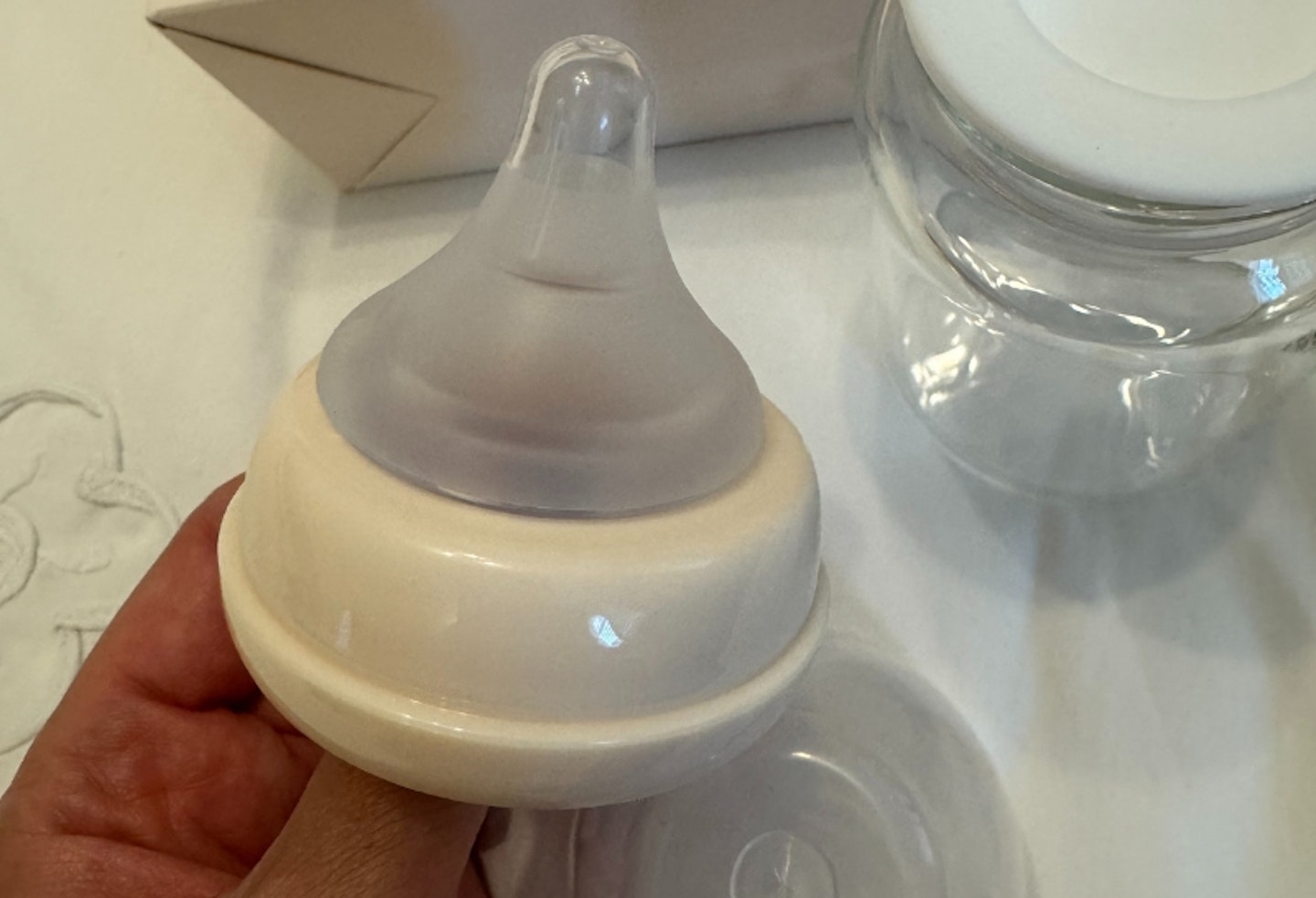
My baby used to have the usual problems with gassiness so whenever we did use a bottle, we used those with anti-colic vents etc. By the time I started to test these bottles, he had more or less gone past that stage so I cannot comment on whether they would help or not with a younger/gassy/colicky baby.
I have found the glass bottles very useful for short-term storage of expressed breastmilk in the fridge, as I prefer glass to plastic. As well as the plastic lids, there are plastic saucer-shaped things which I have been using to put on top of the bottles to store the milk. They seem to be watertight when placed between bottle and teat, with the plastic lid on top. I am not sure if this is how they are supposed to be used, as they are not mentioned on the packaging and there are no instructions.
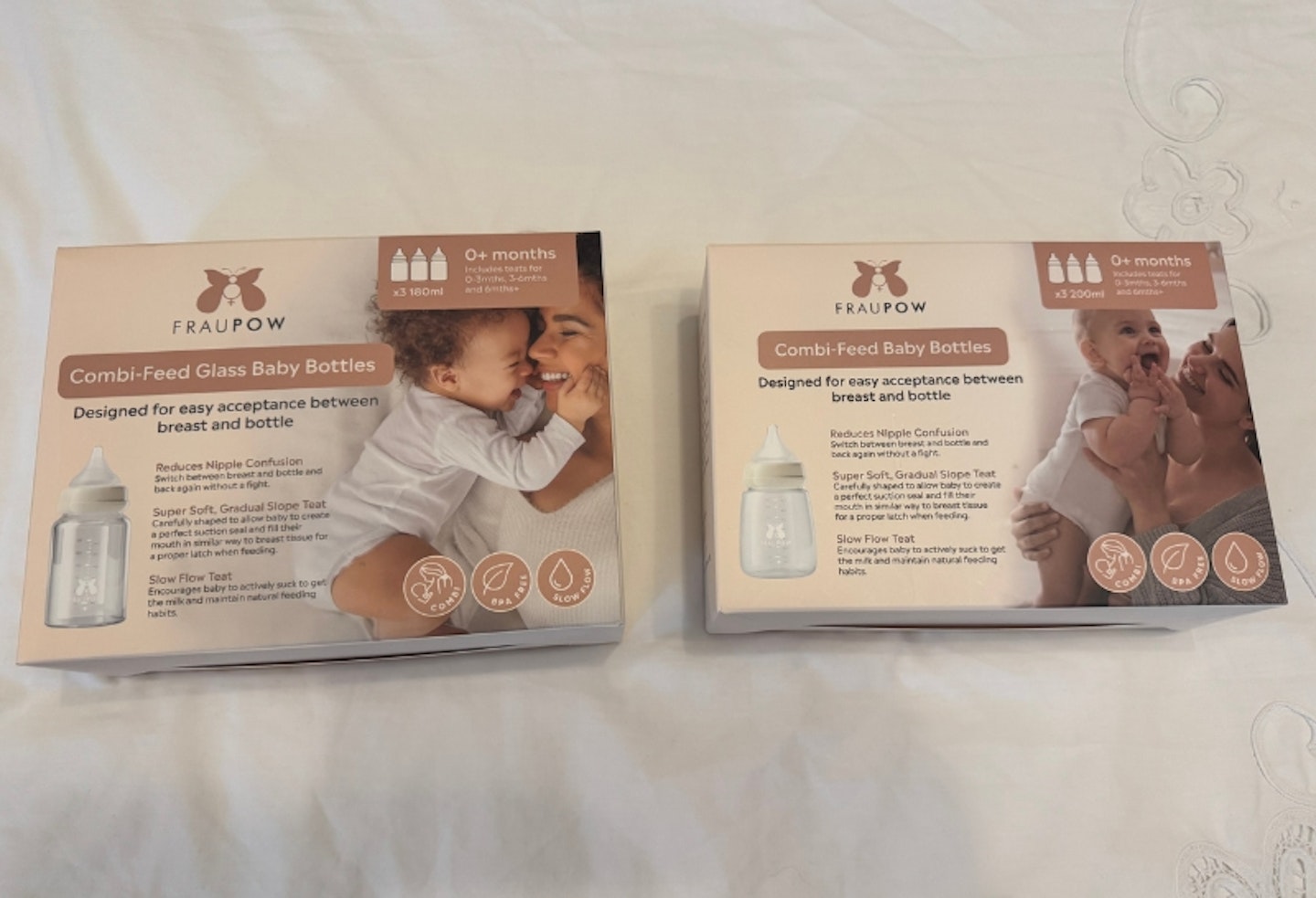
Final verdict
All in all, I really like the idea behind these bottles and am hoping the baby will become increasingly used to them so that he will easily interchange between breast and bottle. I do think more teats need to be supplied so that all three bottles can be used in rotation at any one time, and the teats need to be labelled better to reduce the risk of using the wrong flow for the baby's age.
Emily Gilbert is the Features & Reviews Editor for Mother&Baby. With a background in both print and digital journalism, she has written extensively on pregnancy, fertility, perinatal mental health, and the best in baby and parenting products. A first-time mum to Theodore, Emily combines her professional expertise with personal experience, offering readers trusted advice and relatable insight. Specialising in product and travel reviews, she stays ahead of the curve on the latest parenting trends and is passionate about showing that life with a little one can still be full of adventure.
